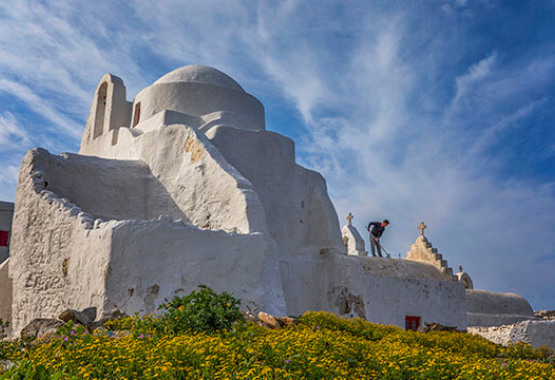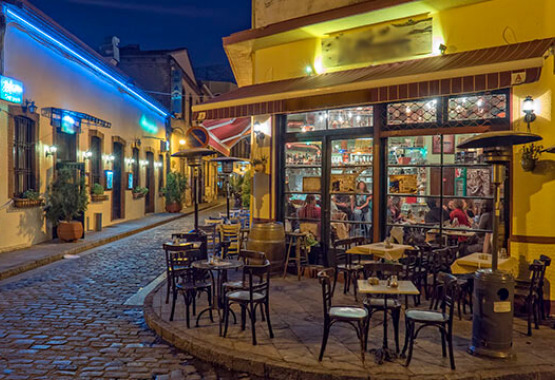An escape to Corinth mountain area
Winter at its Best at a Stone’s Throw from Athens
Dreaming of a wintertime escape in the heart of nature? We recommend the Korinthia mountainous area as your next travelling destination. Take the Athens – Patras motorway and after a two-hour drive your dream is about to unfold.
If your available time is limited, choose a location such as Xylokastro town (pronounced Ksylokastro), Stymphalia lake area, or Trikala village for your stay. The mountainous Korinthia terrain, dotted with picturesque villages and two beautiful lakes, extends along the fir-clad slopes of Mt Zireia (Kyllini), which is the second highest mountain in the Peloponnese, the highest one being Mt Taygetos. Here’s a list of must-visit places in the area:
Stymphalia
Built on Mt Zireia uplands, this village stretches among gurgling spring waters and is enveloped in Greek myth. According to the legend, Stymphalia Lake area is where Hercules carried out his 5th labour. In the lake’s reed thickets, the hero slew the Stymphalian fowls, the man-eating birds with the bronze wings that lived by the lake’s banks and terrorised the locals. The area is located 61 km W of Corinth town.
Places worth visiting
- Lake Stymphalia is nestled among four mountains: Zireia, Oligyrto, Mavrovouni and Gavria. It is a beautiful wetland habitat that harbours more than 140 species of fowl, some of which are rare. Enjoy a romantic walk along the lakeside area and stop by the bird observatories to watch the birds low-flying over the waters. If you prefer hiking, follow the trails that start here and enjoy your trip in the heart of nature.
- the Environment Museum of Stymphalia
- the ruins of ancient Stymphalos town, at the north lake shore
- the impressive Zaraka Monastery ruins, with a history that dates back to 1236 (once populated by Cistercian monks who came from the Hautecombe Abbey, Savoy), located off the village limits; the construction’s remaining pillars follow the style found in 13th c. gothic churches.
- Kalianoi village, where you will enjoy a hiking trip towards Agia Paraskevi Monastery, an out of sight place in the ravine. Kionia and Kastania villages are set in green surroundings of chestnut, walnut, fir and plane trees. These spots afford breathtaking views to the lake.
Trikala
This village has been built in three levels along the forested slopes of Mt Zireia, – Ano [Upper] Trikala, Mesaia [Middle] Trikala & Kato [Lower] Trikala. It is the most popular tourist destination on mountainous Korinthia, and it offers great views of the surrounding mountains and the Gulf of Corinth.
Places worth visiting:
- the churches of Agios Dimitrios (1697) & Agios Ioannis (1853), and the stone-built square with the centuries-old plane trees in Kato Trikala,
- the Metamorphosis tou Sotira Church in Mesaia Trikala (9th c.), and
- the stone-built mansion of the Notaras family [an eminent local family], where Agios Gerasimos Notaras [a Greek Orthodox saint] was born at Ano Trikala.
- The Agios Vlasios monastery (17th c.) amidst green surroundings.
- Flampouritsa Valley, situated between the Megali Zireia and Mikri Zireia peaks.
- The cave of Hermes on the west side of Flambouritsa valley with impressive stalagmite and stalactite formations.
Feneos
This upland village has been built in a verdant setting close to the Feneos archaeological site. The surrounding area’s breathtaking beauty closely resembles that of Swiss landscapes.
Places worth visiting:
- ancient Feneos town ruins; see the temple of Asclepius [god of health] and a section of the acropolis’ fortifications. The Archaeological Collection contains local finds and it is on display at nearby Kalivia village (near Ancient Feneos).
- artificial lake Doxa, formed by the Feneos-Doxa dam, with the waters of Olvios River. Take a walk around the lake and enjoy the enchanting lush green surroundings. The picturesque 14th century Palaiomonastiro (a small church) is located in the middle of the lake (linked to the shore by a narrow strip of land).
- the three-storey monastery of Agios Georgios (1693), very close to Lake Doxa, provides an impressive view of the region. During the Turkish Occupation, the monastery used to hide a “secret Greek school” (the site has been converted to a small museum). During your visit, try the monastery’s famous treat: the very tasty rose petals spoon sweet.
- the fertile Feneos valley where top quality potatoes, beans, lentils, and walnuts are produced and you can buy them in local shops.
- the picturesque Mt. Zireia villages of Ano Tarsos (visit nearby “Panagia tou Vrachou”, a small 14th -15th c. fortified town), Kato Tarsos, Steno, Goura, Mesino and Mosia.
Upland Activities
Mt. Zireia is a great hiking destination. Beautiful winding trails start from almost all of the villages and stretch for miles all the way to the mountaintop, or lead to other villages / forests in the area.
Follow the trail that starts from the Stymphalia – Kastania road and ends at the Mycenaean Castle location; you will be rewarded with a stunning view of the lake and the Stymphalos archaeological site. Other paths you can take are the ones next to Lake Dasiou, particularly the one towards Karya village.
If you’d rather have an off-road adventure, you’ll enjoy riding your 4wd vehicle (or motorbike) from Kiato town towards Stymphalia Valley. Drive also towards Goura village – across Skafidia plateau through Mavros Longos fir tree forest, and from Feneos area towards Agios Georgios Monastery or from Mesaia Trikala village towards Mt. Zireia tableland.
Check out your other options for a great winter holiday:
Skiing, sleighing, snowmobile - riding at the Zireia Ski (Sports) Centre:
- Mountaineering
- Canyoning
- Horse riding at the “Freestyle Horse Riding Centre” (at Rethi, 4 km north of Kato Trikala village)
- Caving
- Paragliding
- Mountain biking from Zireia Sports Centre to Lake Dasiou along a beautiful 4.5 km long path.





